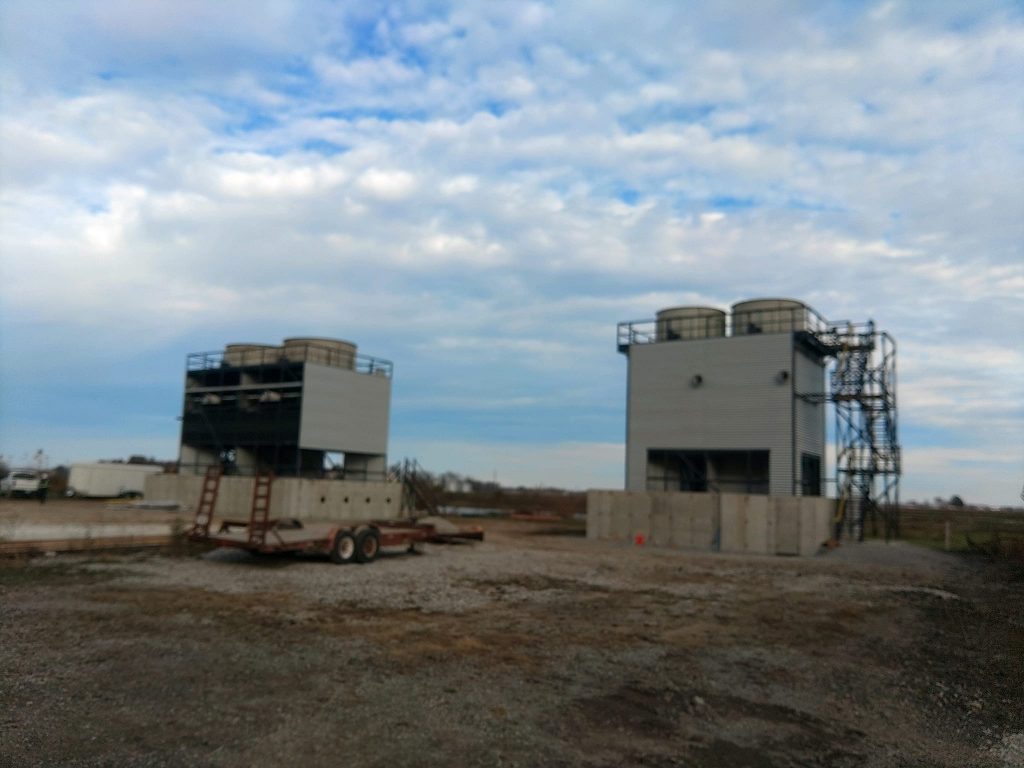Pultruded FRP vs. Galvanized Steel: Key Comparison for Cooling Towers & Industrial Applications
When choosing between pultruded Fiber-Reinforced Polymer (FRP) and galvanized steel for cooling towers, structural supports, or corrosive environments, several factors must be considered—corrosion resistance, weight, strength, cost, and long-term performance. Below is a detailed comparison.
1. Corrosion Resistance
| Material | Performance in Corrosive Environments |
| Pultruded FRP | ◉ Excellent – No rust, even in saltwater, chlorine, or acidic fumes. Resistant to chemicals, UV (if coated), and microbial growth. |
| Galvanized Steel | ◉ Limited – Zinc coating protects against rust, but scratches, weld points, and prolonged chemical exposure lead to corrosion. Requires maintenance. |
Winner: FRP (Ideal for cooling towers, wastewater plants, marine applications.)
2. Strength & Weight
| Property | Pultruded FRP | Galvanized Steel |
| Tensile Strength | 30,000–50,000 psi | 50,000–80,000 psi |
| Weight | 1/4th of steel (~1.8 g/cm³) | Heavy (~7.8 g/cm³) |
| Strength-to-Weight Ratio | Higher (Better for lightweight structures) | Lower |
| Stiffness (Modulus of Elasticity) | ~3–6 Msi (Less rigid than steel) | ~29 Msi (More rigid) |
Winner:
- FRP for lightweight, corrosion-resistant structures.
- Steel for ultra-high rigidity (e.g., heavy load-bearing).
3. Durability & Lifespan
| Factor | Pultruded FRP | Galvanized Steel |
| Lifespan in Harsh Conditions | 30-50+ years (No corrosion) | 10-25 years (Depends on coating integrity) |
| Maintenance Needs | None (No painting, sealing, or rust treatment) | Regular inspections, recoating, weld repairs |
| Impact Resistance | Good (but can crack under extreme impact) | Better (ductile, dents rather than shatters) |
Winner: FRP (Lower lifecycle cost, zero maintenance.)
4. Thermal & Electrical Properties
| Property | Pultruded FRP | Galvanized Steel |
| Thermal Conductivity | Low (Good insulator) | High (Conductive, can transfer heat/cold) |
| Electrical Conductivity | Non-conductive (Safe near electrical systems) | Conductive (Risk of galvanic corrosion) |
Winner: FRP (Better for electrical insulation and thermal efficiency.)
5. Installation & Fabrication
| Factor | Pultruded FRP | Galvanized Steel |
| Ease of Installation | Lightweight, easy to handle | Heavy, requires cranes/lifting equipment |
| Machining & Joining | Requires adhesives/FRP fasteners (no welding) | Easily welded, bolted, or riveted |
| Customization | Pultrusion allows custom profiles | Easily fabricated on-site |
Winner:
- FRP for lightweight, pre-fabricated structures.
- Steel for on-site modifications/welding.
6. Cost Comparison
| Factor | Pultruded FRP | Galvanized Steel |
| Initial Cost | Higher (~1.5–3x steel) | Lower |
| Installation Cost | Lower (lightweight, faster) | Higher (heavy, welding, corrosion prep) |
| Maintenance Cost | Negligible | High (painting, rust removal, replacements) |
| Lifecycle Cost (20+ yrs) | Lower (No replacements) | Higher (frequent upkeep) |
Winner: FRP for long-term savings, steel for upfront budget projects.
7. Best Applications for Each Material
◉ Choose Pultruded FRP When:
◉ Cooling towers (chemical plants, marine environments)
◉ Water treatment plants (chlorine resistance)
◉ Electrical & telecom structures (non-conductive)
◉ Walkways, ladders, railings in corrosive zones
◉ Choose Galvanized Steel When:
◉ High-load structures (e.g., heavy industrial frames)
◉ Short-term projects with budget constraints
◉ Non-corrosive or dry environments
◉ Where welding/modifications are needed
Final Verdict: Which One to Choose?
| Factor | Pultruded FRP Wins | Galvanized Steel Wins |
| Corrosion Resistance | ◉ | ◉ |
| Weight | ◉ (Lightweight) | ◉ (Heavy) |
| Strength | ◉ (Lower than steel) | ◉ (Higher rigidity) |
| Durability | ◉ (30-50+ years) | ◉ (10-25 years) |
| Maintenance | ◉ (Zero) | ◉ (High) |
| Cost (Long-Term) | ◉ (Cheaper over time) | ◉ (Higher upkeep) |
For cooling towers, chemical plants, and marine applications, FRP is the superior choice.
For heavy load-bearing structures in dry environments, galvanized steel may suffice.
